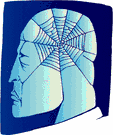Semantic Web Tutorial


 |
The Semantic Web = a Web with a meaning.
"If HTML and the Web made all the online documents look like
one huge book, RDF, schema, and inference
languages will make all the data in the world look like one
huge database"
Tim Berners-Lee, Weaving the Web, 1999
|
What Is The Semantic Web?
The word semantic stands for the meaning of. The semantic of something is the
meaning of something.
The Semantic Web is a web that is able to describe things in a way that
computers can understand.
- The Beatles was a popular band from Liverpool.
- John Lennon was a member of the Beatles.
- The record "Hey Jude" was recorded by the Beatles.
Sentences like these can be understood by people. But how can they be
understood by computers?
Statements are built with syntax rules. The syntax of a language defines the
rules for building the language statements. But how can syntax become semantic?
This is what the Semantic Web is all about. Describing things in a way that
computers applications can understand.
The Semantic Web is not about links between web pages.
The Semantic Web
describes the relationships between things (like A is a part of B and Y is a member of
Z) and the properties of things (like size, weight, age, and price)
The Resource Description Framework
RDF (Resource Description Framework) is a markup language for describing
information and resources on the web.
Putting information into RDF files, makes it possible for computer programs
("web spiders") to search, discover, pick up, collect, analyze and process information from the web.
The Semantic Web uses RDF to describe web resources.
If you want to learn more about RDF please read our RDF tutorial.
How Can It Be Used?
If information about music, cars, tickets (and everything else) were stored in RDF files,
intelligent web applications could collect information from many different
sources, combine information, and present it to
users in a meaningful way.
Information like this:
- Car prices from different resellers
- Information about medicines
- Plane schedules
- Spare parts for the industry
- Information about books (price, pages, editor, year)
- Who is who
- Dates of events
- Computer updates
Can It Be Understood?
The Semantic Web is not a very fast growing technology.
One of the reasons for that is the learning curve. RDF was developed by
people with academic background in
logic and artificial intelligence. For traditional developers it is not very
easy to understand.
One fast growing language for building semantic web applications is RSS. If
you want to learn more about RSS please
read our RSS tutorial.
In the following pages of this tutorial we will concentrate on using RDF to
discover the potentials of the semantic web.
Please move on to the next chapter to see a simple semantic web application
example.


|